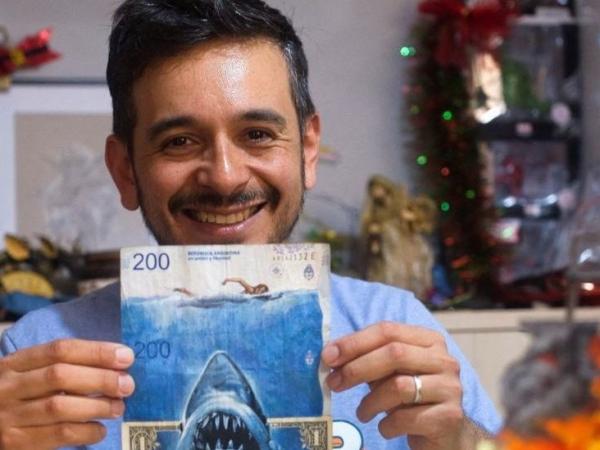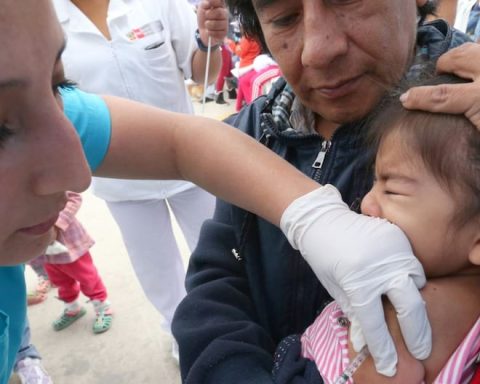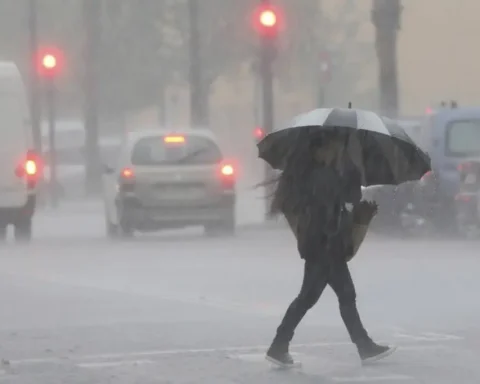The Central Bank of Argentina (BCRA) will issue a new, higher denomination note in response to the skyrocketing inflation that has gripped the country.
The new 2,000-peso note – about US$11 at the official exchange rate – is issued after a rise in consumer prices of almost 95% in the 12 months to the end of December 2022.
This is the highest rate of inflation Argentina has experienced since 1991.
Until now, the highest denomination bill was 1,000 pesos, which has a value of US$2.70 in alternative markets.
The BCRA announced the issuance of the new banknote in a statement on its Twitter account, saying that it “commemorates the development of science and medicine in Argentina”, with images of pioneering doctors.
However, he did not specify when the bill will enter circulation.
When the current Argentine currency was introduced in 1992, its value was pegged to the US dollar.
But that fixed exchange rate system was abandoned after the financial crisis that hit the country in 2001 and 2002.
Now in Argentina there is not a single price of the dollar. There are at least six and the variation between the lowest and the highest price is so wide that it sometimes exceeds 100%.
In the middle of last year, the country had three finance ministers in the span of just four weeks, a reflection of the enormous difficulties.
In September, the Central Bank also raised its main interest rate to 75% in an attempt to contain the sharp increase in the cost of living.
The Argentine peso has lost so much value that a local artist uses the bills to paint on them, because they are cheaper than canvas.
Sergio Díaz, from the city of Salta, recently made a painting that includes the image of the shark from the Steven Spielberg movie to parody the constant inflation in the country.
Argentina has seen commodity prices skyrocket with the rising costs of goods and services, including energy.
The sharp rise in prices is mainly attributed to the printing of more money by the Central Bank, as well as the war in Ukraine.
In December, the International Monetary Fund (IMF) approved another US$6 billion rescue package to move its economy forward, the second in South America.
It was the largest disbursement for Argentina of an aid program that will last 30 months and is expected to reach a total of US$44,000 million.
Earlier this week, Brazil and Argentina announced plans to create a common currency that would be used to boost trade between the two countries.
The leaders of the two largest South American economies have expressed the need to find ways to finance trade without relying on the US dollar, but discussions are in their early stages.
Argentina is no stranger to this type of dramatic economic situation. In the 1989 crisis, the cost of living reached its maximum record, above 3000% per year.
It is not estimated that this level will be reached, but the current constantly growing inflation has hurt the poorest people, who today represent almost 40% of the population.
Most subsist on state aid, but this assistance has also failed to keep up with rising prices.
The minimum wage does not cover half of a basic food basket for an average family and even a couple with a registered job does not have a guaranteed minimum income to avoid falling into poverty.
According to research carried out in 2021 by the Center for Distributive, Labor and Social Studies (Cedlas) of the National University of La Plata and the Argentine Social Debt Observatory of the Argentine Catholic University, one in five wage earners is poor and a third of all the employed Argentines live in poverty.
This article was based on information from Thomas Mackintosh of BBC News and Verónica Smink of BBC Mundo in Argentina.
Now you can receive notifications from BBC Mundo. Download the new version of our app and activate them so you don’t miss out on our best content.














